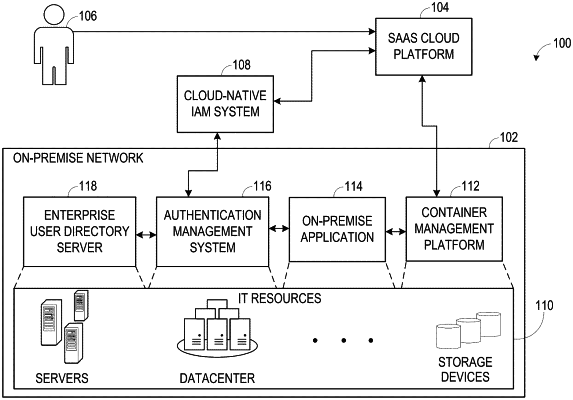| CPC H04L 63/102 (2013.01) [H04L 63/083 (2013.01); H04L 63/104 (2013.01); H04L 67/306 (2013.01)] | 20 Claims |

|
1. An authentication management system comprising:
a processor; and
a non-transitory machine-readable medium storing instructions that, when executed by the processor, cause the processor to:
receive an authentication request from an application hosted on a private on-premise network to authenticate a user using an enterprise-level authentication protocol, wherein the authentication request is generated by the application upon receiving an access request from the user via a software as-a-service (SaaS) cloud platform in a cloud-native authentication protocol;
create a new user entry corresponding to the user in an enterprise user directory server hosted in the private on-premise network in response to determining that the user is successfully authenticated and the user does not exist in the enterprise user directory server:
generate, based on the new user entry, an authentication response compliant with the enterprise-level authentication protocol based on an authentication reply that is formatted in compliance to the cloud-native authentication protocol and received from a cloud-native identity and authentication management (IAM) system based on the authentication request; and
send the authentication response to the application.
|